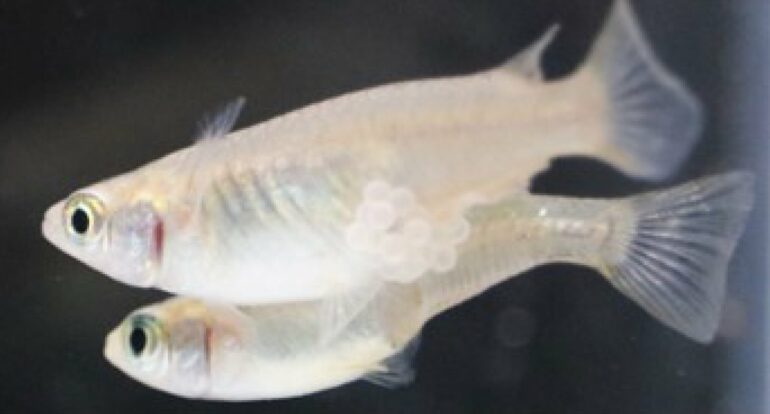Working out the kinks of mating in the animal kingdom helps to gain insights into the survival of species. Among animals that have multiple partners who deposit eggs outside their body, such as most fish, the males release sperm several times a day, but producing these gametes requires energy and time.
Osaka Metropolitan University experts on fish behavior have recently uncovered a daily mating capacity for medaka. In findings published in Royal Society Open Science, Graduate School of Science Specially Appointed Dr. Yuki Kondo, Specially Appointed Professor Masanori Kohda, and Professor Satoshi Awata detail the effects of continuous mating by medaka on the number of sperm released, fertilization rates, and the behavior of both males and females.
“Medaka are among the fish that spawn, where fertilization occurs after the eggs and sperm are released in water. As these gametes are difficult to collect, the number of sperm released and the fertilization rate during successive matings had remained a mystery,” Dr. Kondo explained.
“Our research group previously developed an accurate method for measuring the sperm count of medaka, which is why we were able to successfully conduct this experiment.”
The group’s latest experiment showed that male medaka on average can mate 19 times a day. During the first three mating sessions, the medaka released more than 50% of their daily sperm output. While the fertilization rate was nearly 100% in the early matings, this decreased significantly after the 10th time, with some later cases where there was no fertilization confirmed.
Female medaka can produce eggs once per day, but they release all their eggs when mating. This means that many eggs go to waste when females mate with males who have already released most or all their sperm.
“This is the first study to quantitatively show the clear daily mating capacity of male medaka, as well as the volume of sperm released during each mating, fertilization rate, and the behavior of males and females during this process,” Professor Awata said.
“Our research provides important insights into the relationship between the cost of gamete production and sexual selection.”
The study highlights the importance of understanding reproductive strategies and energy allocation in animals, which can have implications for conservation and breeding programs. By examining the mating behaviors and capacities of medaka, researchers can better understand how these fish and similar species manage their reproductive efforts in natural environments.
The findings also suggest that there may be evolutionary pressures on both male and female medaka to optimize their mating strategies. For males, this could mean balancing the number of mating attempts with the quality of sperm released, while females may need to be selective about their mating partners to ensure successful fertilization.
Overall, the research conducted by Osaka Metropolitan University provides valuable insights into the complex dynamics of reproduction in the animal kingdom, particularly for species with external fertilization. This knowledge can contribute to broader ecological and evolutionary studies, helping scientists to better understand the factors that influence species survival and adaptation.
More information:
Male medaka continue to mate with females despite sperm depletion, Royal Society Open Science (2025). DOI: 10.1098/rsos.241668. royalsocietypublishing.org/doi/10.1098/rsos.241668
Provided by
Osaka Metropolitan University
Citation:
19 times a day: Male medaka mating limits revealed (2025, January 7)



